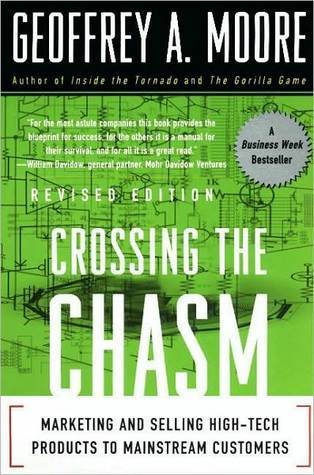More on this book
Community
Kindle Notes & Highlights
Read between
April 13, 2019 - September 19, 2021
The chasm model represents a pattern in market development that is based on the tendency of pragmatic people to adopt new technology when they see other people like them doing the same. This causes them to hang together as a group, and the group’s initial reaction, like teenagers at a junior high dance, is to hesitate and watch. This is the chasm effect. The tendency is very deep-rooted, and so the pattern is very persistent.
Finally, I would just like to say that this work is going to make you think. And the best way to prepare yourself for the fast-paced, ever-changing competitive world of marketing is to prepare yourself to think. This book adds the dimension of creative thinking as a prelude to action. It will change the way you think about marketing. It will change the way you think about market relationships.
Every truly innovative high-tech product starts out as a fad—something with no known market value or purpose but with “great properties” that generate a lot of enthusiasm within an “in crowd.” That’s the early market. Then comes a period during which the rest of the world watches to see if anything can be made of this; that is
Santhosh Guru liked this
It turns out our attitude toward technology adoption becomes significant—at least in a marketing sense—any time we are introduced to products that require us to change our current mode of behavior or to modify other products and services we rely on. In academic terms, such change-sensitive products are called discontinuous innovations. The contrasting term, continuous innovations, refers to the normal upgrading of products that does not require us to change behavior.
were more classically educated, perhaps it was Archimedes crying, “Eureka!” at discovering the concept of measuring specific gravity through the displacement of water, or Daedalus, inventing a labyrinth and then the wings whereby one could fly out of it (if one did not fly too close to the sun). Or, for those who turn more toward movies and TV, more familiar examples of the type include Back to the Future’s Doc Brown or the Professor from “Gilligan’s Island.” “Inventors,” “propeller heads,” “nerds,” “techies”—we have many labels for a group of people who are, as a rule and despite a tendency
...more
Visionaries are not looking for an improvement; they are looking for a fundamental breakthrough. Technology is important only insomuch as it promises to deliver on this dream. If the dream is cell phone usage anywhere, then the system will involve a matrix of Low-Earth-Orbit satellites such as Iridium or Teledesic. If it is one-on-one marketing, then the technology will include data mining of transaction-processing databases such as that provided by BM’s Intelligent Miner. If it is an inventoryless supply chain then it will include


